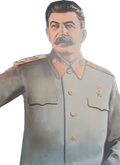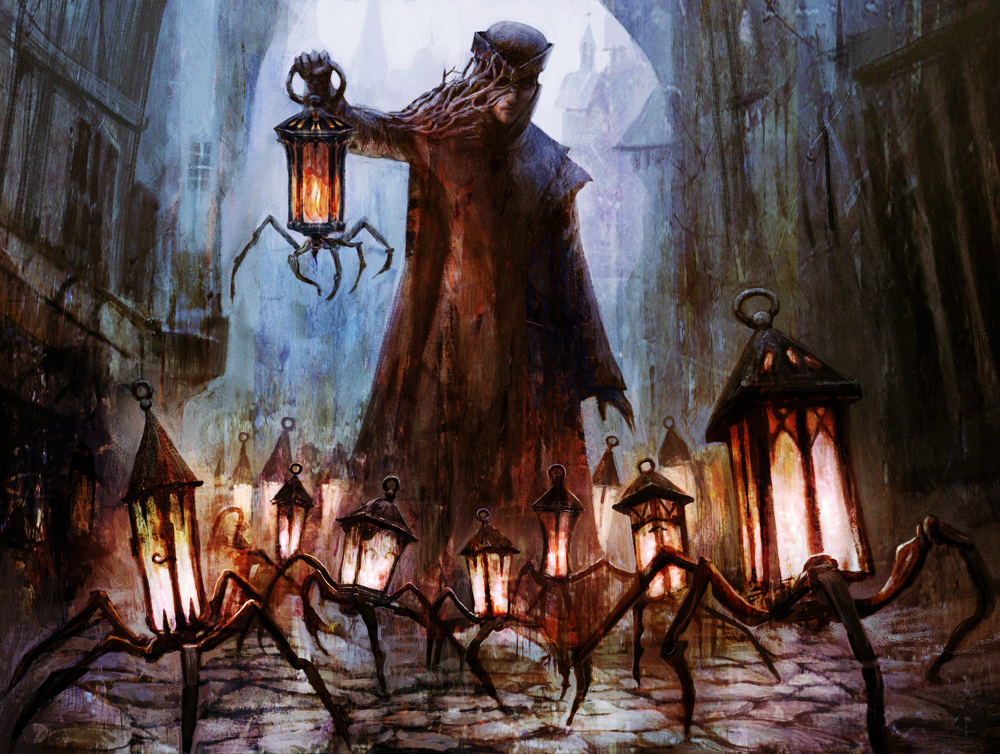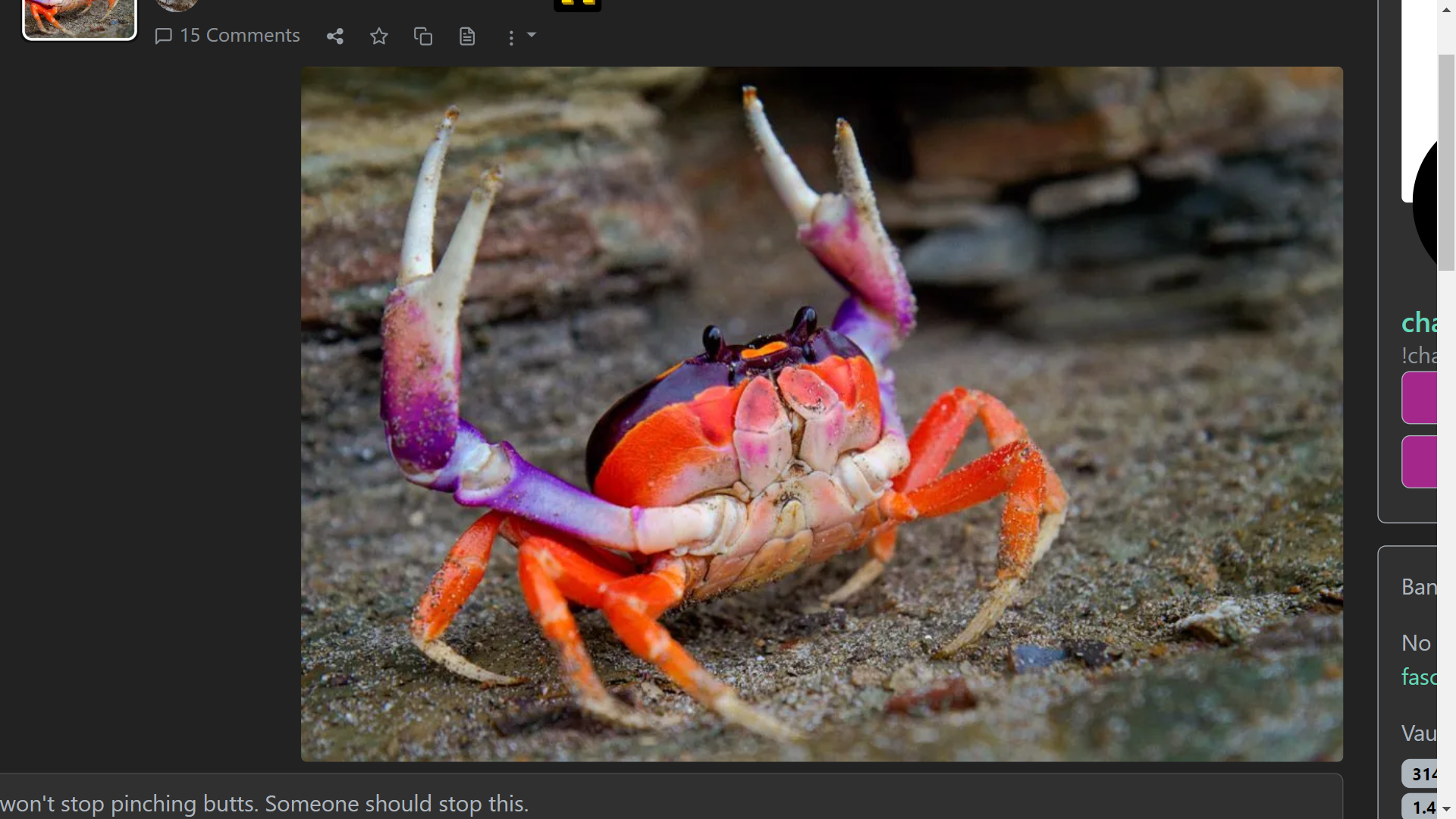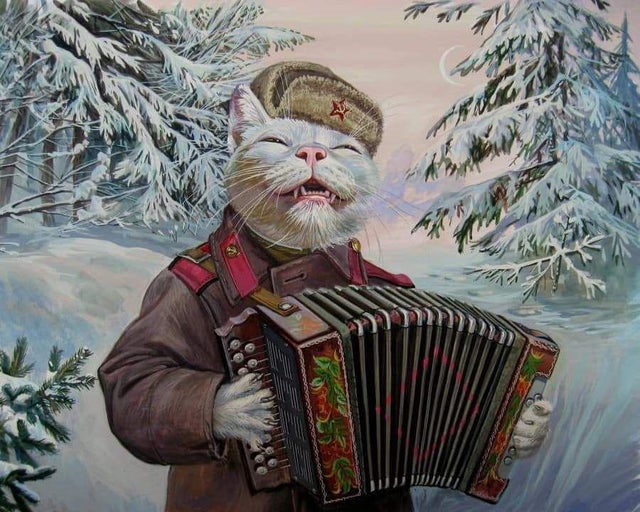I don’t have time to deep dive into it, anyone with some knowledge can direct me to some links or some names of people who don’t have the NATO version of the famine?
Here’s a post of mine about how the propaganda narrative was orchestrated using Nazi friendly newspapers and reporters, and then was reinforced via CIA funded publishing house led by a Ukr Nazi recruited by the CIA. It’s really quite the long con being pulled to make the USSR look as bad as possible.
The Village Voice piece about it is also a good read on this process of historical myth-making.
Thank you
The deprogram sub has a bot that responds with an effort post if you use the word there. Same for several other liberal brainworms.
Like reddit
Yes
Thank you
I’ve a dozen links to throw to you against the concept of a Holodomor, want some?
My disorganized links
Holodomor myth
BadEmpanada The Holodomor Genocide Question: How Wikipedia Lies to You - Bad Empanada ( Sequel Response video: I’ve Been DEBUNKED - My Response on the Holodomor Genocide Question
https://hexbear.net/post/342686
William Randolph Hearst who owned St Donat’s Castle near Cardiff. The newspaper magnate was obviously taken by Jones’s accounts of what had happened in Ukraine and invited the reporter to the US.
https://www.villagevoice.com/in-search-of-a-soviet-holocaust/
Years of Hunger https://diasporiana.org.ua/wp-content/uploads/books/22207/file.pdf
This has to made very clear: The Ukrainian Famine of 1932-33 did in fact happen. The point of contention is that it was not a result of intentional genocide.
-
Then why did it hit parts of Russia, Kazakhstan, Romania, Poland and the EASTERN part of Ukraine where there was and still is a major Russian population?
-
Why did Stalin then send aid from the other republics to relieve the famine?
- Every single source claiming it was an intentional genocide goes back to literal fascists. The Hearst Press run by William Hearst, at the time even known as America’s #1 fascist, whose newspaper was bought by non other than Nazi Germany in 1935. They used photos from Thomas Walker who was apparently in Ukraine in 1933/4 though his American colleague in Moscow, Louis Fischer, did some digging and found out he had never passed anywhere near Ukraine and the photos he used were edited photos of people dying in the civil war era famine and WW1 famines. Some photos not even from Russia but from Austro-Hungary.
http://neodemocracy.blogspot.com/2017/12/fraud-famine-and-fascism-hearst-press.html
- The actual causes are as follows:
-Kulak sabotage(From Professor Scuman who was actually in Ukraine at the time says: "Their [kulak] opposition took the initial form of slaughtering their cattle and horses in preference to having them collectivized. The result was a grievous blow to Soviet agriculture, for most of the cattle and horses were owned by the kulaks. Between 1928 and 1933 the number of horses in the USSR declined from almost 30,000,000 to less than 15,000,000; of horned cattle from 70,000,000 (including 31,000,0000 cows) to 38,000,000 (including 20,000,000 cows); of sheep and goats from 147,000,000 to 50,000,000; and of hogs from 20,000,000 to 12,000,000. Soviet rural economy had not recovered from this staggering loss by 1941. … Some [kulaks] murdered officials, set the torch to the property of the collectives, and even burned their own crops and seed grain. More refused to sow or reap, perhaps on the assumption that the authorities would make concessions and would in any case feed them. The aftermath was the "Ukraine famine’’ of 1932–33 … Lurid accounts, mostly fictional, appeared in the Nazi press in Germany and in the Hearst press in the United States, often illustrated with photographs that turned out to have been taken along the Volga in 1921 … The “famine’’ was not, in its later stages, a result of food shortage, despite the sharp reduction of seed grain and harvests flowing from special requisitions in the spring of 1932 which were apparently occasioned by fear of war in Japan. Most of the victims were kulaks who had refused to sow their fields or had destroyed their crops.”)
– Frederick Schuman, quoted in Douglas Tottle, “Fraud, Famine, and Fascism: the Ukrainian Genocide Myth from Hitler to Harvard,” page 93-94. Share this:
-A drought hit Ukraine 3 years in a row (in his A History of Ukraine, Mikhail Hrushevsky, described by the Nationalists themselves as Ukraine’s leading historian, writing of the year 1932, claimed that ‘Again a year of drought coincided with chaotic agricultural conditions’.
Professor Michael Florinsky, who struggled against the Bolsheviks during the Civil War, noted: `Severe droughts in 1930 and 1931, especially in the Ukraine, aggravated the plight of farming and created near famine conditions’. )
-The third cause of the famine was a typhoid epidemic that ravaged Ukraine and North Caucausus. (Dr. Hans Blumenfeld, internationally respected city planner and recipient of the Order of Canada, worked as an architect in Makayevka, Ukraine during the famine. He wrote: `There is no doubt that the famine claimed many victims. I have no basis on which to estimate their number … Probably most deaths in 1933 were due to epidemics of typhus, typhoid fever, and dysentery. Waterborne diseases were frequent in Makeyevka; I narrowly survived an attack of typhus fever.’
Horsley Grant, the man who made the absurd estimate of 15 million dead under the famine — 60 per cent of an ethnic Ukrainian population of 25 million in 1932 — noted at the same time that `the peak of the typhus epidemic coincided with the famine … it is not possible to separate which of the two causes was more important in causing casualties.')
-The fourth cause of the famine was the disorder provoked by the reorganization of agriculture and the equally profound upheaval in economic and social relations: lack of experience, improvisation and confusion in orders, lack of preparation and leftist radicalism among some of the poorer peasants and some of the civil servants. (Hans Blumenfeld gives, in his autobiography, a résumé of what he experienced during the famine in Ukraine: "The famine was caused by a conjunction of a number of factors. First, the hot dry summer of 1932, which I had experienced in northern Vyatka, had resulted in crop failure in the semiarid regions of the south. Second, the struggle for collectivization had disrupted agriculture. Collectivization was not an orderly process following bureaucratic rules. It consisted of actions by the poor peasants, encouraged by the Party. The poor peasants were eager to expropriate the kulaks,‘’ but less eager to organize a cooperative economy. By 1930 the Party had already sent out cadres to stem and correct excesses … After having exercised restraint in 1930, the Party put on a drive again in 1932. As a result, in that year the kulak economy ceased to produce, and the new collective economy did not yet produce fully. First claim on the inadequate product went to urban industry and to the armed forces; as the future of the entire nation, including the peasants, depended on them, it could hardly be otherwise … `In 1933 rainfall was adequate. The Party sent its best cadres to help organize work in the kolkhozes. They succeeded; after the harvest of 1933 the situation improved radically and with amazing speed. I had the feeling that we had been pulling a heavy cart uphill, uncertain if we would succeed; but in the fall of 1933 we had gone over the top and from then on we could move forward at an accelerating pace.’ )
And to top it all off here’s what the Ukrainian nationalist Isaac Mazepa had to say about it
“At first there were disturbances in the kolkhosi [collective farms] or else the Communist officials and their agents were killed, but later a system of passive resistance was favored which aimed at the systematic frustration of the Bolsheviks’ plans for the sowing and gathering of the harvest … The catastrophe of 1932 was the hardest blow that Soviet Ukraine had to face since the famine of 1921-- 1922. The autumn and spring sowing campaigns both failed. Whole tracts were left unsown, in addition when the crop was being gathered … in many areas, especially in the south, 20, 40 and even 50 per cent was left in the fields, and was either not collected at all or was ruined in the threshing.”
https://neodemocracy.blogspot.com/2017/12/fraud-famine-and-fascism-hearst-press.html
https://newcoldwar.org/wp-content/uploads/2015/06/Tauger-Natural-Disaster-and-Human-Actions-in-the-Soviet-Famine-of-1931-33.pdf?0bbe13&fbclid=IwAR3Ycp\_wtlUup8Pei3LnuPB-BGf6MRpiEr7UledZcaZKqGhi1o4x37Z26pw](https://newcoldwar.org/wp-content/uploads/2015/06/Tauger-Natural-Disaster-and-Human-Actions-in-the-Soviet-Famine-of-1931-33.pdf?0bbe13&fbclid=IwAR3Ycp_wtlUup8Pei3LnuPB-BGf6MRpiEr7UledZcaZKqGhi1o4x37Z26pw)
“In Search of a Soviet Holocaust. A 55 year old Famine Feeds the Right” Village Voice, 1988
https://lrb.co.uk/the-paper/v09/n02/j.-arch-getty/starving-the-ukraine
https://msuweb.montclair.edu/~furrg/research/ukfaminedocs97.pdf
https://eh.net/book_reviews/the-years-of-hunger-soviet-agriculture-1931-1933/
https://www.jstor.org/stable/2500600?seq=1
“Grain Crisis or Famine? The Ukrainian State Commission for Aid to Crop-Failure Victims and the Ukrainian Famine of 1928-1929.” https://carlbeckpapers.pitt.edu/ojs/index.php/cbp/article/view/89
https://msuweb.montclair.edu/~furrg/research/aidtoukraine020733
Yes thank you!
-
Here’s a PDF of The Years Of Hunger by Stephen Wheatcroft and R.W. Davies, which is probably the best book written on the subject:
https://diasporiana.org.ua/wp-content/uploads/books/22207/file.pdf
I started reading it thank you
You’re gonna want the intro to Davies and Wheatcroft’s “The Years of Hunger,” part of their series on Soviet agriculture. The second edition and later, as the first don’t have the relevant intro.
Thank you
Thank you
WELCOME TO THE HOLODOME, GIVE ME YOUR GRAIN


Sorry the way you spelled it made me think itCan’t we all just get beyond the holodome?
https://en.prolewiki.org/wiki/Holodomor Good resources provided.
The Hullamador

I just don’t think about it
It’s worth exploring.
I agree that the mostly fake US propaganda shouldn’t occupy too many of the wrinkles in your brain. Even if it is to debunk it.
Its NAZI propaganda that the rest of the west signal boosted
That’s what I said.
Being skeptical of Western propaganda doesn’t mean there’s no truth to the claims. Famine is famine. That doesn’t mean that the soviets were at fault, necessarily. But it also doesn’t mean we shouldn’t critically look at leftist policies and learn from any mistakes.
Ehh, I am just going to assume all western propaganda is fake. No point in really trying to enguage with it and just assuming it is all made up is close enough to accurate for any reasonable purpose. It isn’t good to let liberals force the conversations round the failures of communism. It really isn’t done in good faith and we shouldn’t give them that. There are really only a handful of facts that are important to know about this anyway.
That’s my general stance as well.
Famine is famine indeed, it isn’t about “leftist politics”.
Also denouncing Western propaganda is the correct stance because it is, in fact, propaganda.
Who exactly is saying you can’t be critical? Self-critisism is a leftist thing.
The original comment was to just not think about it. That isn’t being critical. I’m not trying to fight about this I’m trying to learn more. My general stance is probably very well accepted here













